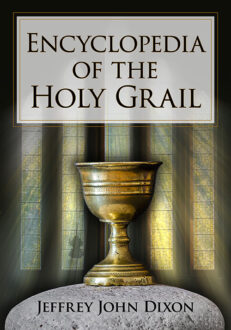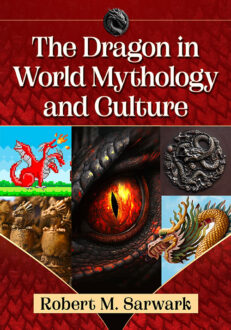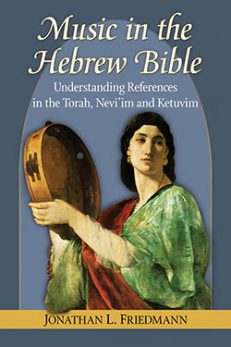Music in the Hebrew Bible
Understanding References in the Torah, Nevi’im and Ketuvim
$55.00
In stock
About the Book
Music in the Hebrew Bible investigates musical citations in the Hebrew Bible and their relevance for our times. Most biblical musical references are addressed, either alone or as a grouping, and each is considered from a modern perspective. The book consists of one hundred brief essays divided into four parts. Part one offers general overviews of musical contexts, recurring musical-biblical themes and discussions of basic attitudes and tendencies of the biblical authors and their society. Part two presents essays uncovering what the Torah (Pentateuch) has to say about music, both literally and allegorically. The third part includes studies on music’s place in Nevi’im (Prophets) and the perceived link between musical expression and human-divine contact. Part four is comprised of essays on musical subjects derived from the disparate texts of Ketuvim (Writings).
About the Author(s)
Bibliographic Details
Jonathan L. Friedmann
Format: softcover (6 x 9)
Pages: 216
Bibliographic Info: appendix, notes, bibliography, index
Copyright Date: 2014
pISBN: 978-0-7864-7773-9
eISBN: 978-1-4766-1439-7
Imprint: McFarland
Table of Contents
Preface 1
Introduction 7
Part One: Background
1. Music All Around 17
2. A Silent Source 18
3. The Ethos of Song 20
4. Instruction and Inspiration 21
5. Institutions of Song 23
6. A Human Need 25
7. Ceremonial Tones 26
8. Vessels of Song 28
9. Is It Music? 29
10. Dancing into Being 31
11. The Purposes of Cantillation 33
12. Chant and Revelation 34
13. Not Music Alone 36
14. Songs and Sacrifice 37
15. Necessary Songs 39
16. Words and Music 41
17. A Musical Heart 42
18. Singing About Singing 44
19. The Divine Musician 45
20. Work Songs 46
21. Proto-Cantors 48
22. New Year’s Noise 50
23. The Human Family 51
24. Dancing with Torches 53
25. Defending the Organ 55
Part Two: Torah—Pentateuch
26. All the Music of the Torah 59
27. Ordered Sound 60
28. Words, Words, Words 61
29. Singing Souls 63
30. Melodic Beginnings 65
31. A Musical Species 66
32. Musical Departures 68
33. God of the Philosophers 70
34. The Invisible Art 71
35. Inventing Hymns 73
36. A Musical Back-and-Forth 75
37. Effect and Belief 77
38. Miriam’s Song 79
39. Singing the Self 81
40. Music and Iconoclasm 82
41. Song of the Calf 84
42. Keeping Shabbat 85
43. Noisy Vestments 87
44. Distinguishing Sounds 88
45. How Goodly 90
46. Hearing the Holy 91
47. From Stutter to Song 93
48. Sabbath Peace 94
49. Table Songs 96
Part Three: Nevi’im—Prophets
50. Bad Vibrations 101
51. Terrifying Tones 103
52. Dancing with Timbrels 104
53. Fanfares 106
54. Music, Magic and Manipulation 107
55. Music Hidden and Revealed 108
56. Beauty and Function 110
57. Sacred Perception 111
58. Simulating Silence 112
59. Composing Legends 115
60. Performing Poetry 116
61. The Silent Treatment 118
62. Collective Healing 119
63. Surprising Sounds 121
64. Musical Prophets 123
65. Music as Rhetoric 125
66. Parties and Piety 126
Part Four: Ketuvim—Writings
67. The Significance of Song 131
68. Temple Sounds 132
69. The Myth of Musical Purity 134
70. Persuasive Tones 136
71. Textual Tension 138
72. Everybody Sings 139
73. Theurgy and Concentration 140
74. Public-Private Prayer-Song 142
75. Psalms of Thanksgiving 144
76. The Thanksgiving Impulse 145
77. Musical Maccabees 147
78. A Musical Remedy 148
79. Selah 150
80. A Virtuoso in the Temple Choir 152
81. Enter in Song 153
82. Tuneful Bones 154
83. Loving Love Songs 156
84. Instrument of Joy 158
85. Songs in High Places 160
86. Particular and Universal 161
87. Musical Awakening 163
88. Liturgy and Leftovers 164
89. Hallelujah 166
90. Fear the Music 167
91. Sound and Circumstance 170
92. Sonorous Revelation 171
93. Survival and the Song of Songs 173
94. Sing an Old Song 175
95. Ritual Reenactmant 177
96. Sound Science 179
97. A Singing Community 180
98. Ear of the Beholder 181
99. In Song and War 183
100. Songs of Derision 184
Appendix: Resources in Jewish Musicology 187
Bibliography 197
Index 201





